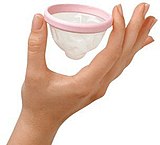I've been asked many times about the salicylate levels in the food that I eat.
There are many websites out there about the contents of salicylate in food and they contradict each other. Some say it's negligible and another says that it is low or even moderate.
I use the
Anne Swain research as my guide. I also follow the
Failsafe Diet (though not 100% as I am able to tolerate a few different types of food). That being said, I also believe that each and everyone of us function differently. Some may not even tolerate even low levels of salicylate. I am able to.
However, being a person who experienced anaphylaxis due to an overload of salicylates, I still have to be careful and vigilant where my diet is concerned.
Here are some tips which I learned through experience and by researching:
1. Butter Is Not Yellow
I grew up thinking that butter was a dark, golden yellow as all the butter that we bought from supermarkets are in dark, golden yellow. Until a friend shared with me that the yellow colour is from COLOURING!
Annatto is used to give butter that deep yellow colour as the colour of butter range from creamy white to golden yellow. The colour of butter depends on the diet of the cow!
Annatto is derived from the seeds of the achiote trees. The seeds are sourced to produce a carotenoid-based-yellow to orange food coloring and flavour!
click on
ANNATTO to read more
As annatto is from a plant, it does not surprise me when I read that it causes rare allergic reactions. To me, plants = salicylates. And when I searched for a link between annatto and salicylates, I found this:
ANNATO & SALICYLATE
Do take time to read this!
The best part is, even when I did not know of this, I was reacting to butter. According to the salicylate table content, the level of salicylate in butter is negligible! But yet, after every time I butter up my home-made bread, within a few minutes, the lid of my eye would break out in a tiny pimple and it would itch like crazy! I guess this 'annatto' must be the culprit.
2. The Promising Pear Isn't So Promising After All
The relapse which I had that sent me rushing to the ER after sticking the EpiPen into my thigh was triggered by a
peeled PECKHAM PEAR!
And a peeled Peckham pear is supposed to be salicylate-free!
Well, it burned my mouth so badly that it felt like the fires of Hades were residing in my mouth. And the allergy-migraine-from-the-bowels-of-Hades struck. And then I couldn't breathe.
Could it have been triggered by the insecticide that was sprayed on the skin of the pears? Could it have been caused by something in the pear that I did not know of?
And so I did some research and discovered that pears contain a moderate amount of OXALATES!
The first thing that came to mind was, 'WHAT THE HELL ARE OXALATES?'
***Oxalates are crystals that may form in the body upon the ingestion of foods high in oxalic acid, such as spinach and soy. The crystals are needle -sharp, and can cause kidney stones as well as unexplained pain in any soft tissue, such as the muscles, eyes and heart.
***taken from
here
The solution to oxalate sensitivity include avoidance of high-oxalate vegetables and fruits and increased mineral supplements both to prevent oxalate formation and to facilitate oxalate removal from the body.
To people who are salicylate sensitive, they may cross-react to many other things, which may include oxalates.
Am I oxalate sensitive? I have no idea. But it is good to be aware of oxalates.
Click
here for an interesting read on oxalates.
3. The Anti-Caking Agent
When I first started the salicylate-free journey 41 months ago, I saw that corn flour is salicylate-free. Therefore I would be safe. Boy, was I wrong!
The burning sensation was horrible and the same allergy-migraine-from-hell came soon after.
Why did it happen?
What triggered the attack?
Most products in loose forms have anti-caking agents in them to prevent the formation of lumps. And it is an ADDITIVE!
The anti-caking agent (554) which is sodium aluminosilicate is a man-made product. It is mostly used in table salt. And this is present is dried milks, sugar products and even in flours!
An interesting
link. Do read it.
4. The Sulphuric Cabbage
41 months back, I thought that cabbage was a very fine vegetable. I mean it was salicylate-free! And I LOVE cabbage. Yummy to the tummy.
But the smell of cabbage made me sick.
It was as though I was smelling rotten food. It gave out this gas which made me sick. Really sick.
After researching, I discovered that it was the sulphur! It was a sulphuric food. So was petai, durian and nangka (jackfruit). And I could not tolerate all these smells after the anaphylactic attack.
Here is a
list of sulphur containing food.
People being salicylate-sensitive could cross react with sulphuric foods.
5. Of Beans & Sprouts
Just because the mung bean is salicylate-free, it does not mean you can pig out on bean-sprouts.
The beans have no salicylates. The sprouts do. They are low in salicylates. Bear in mind of the differences!
My allergist/immunologist shared that salicylate is negligible in sunflower oil. But not in the flower! So if you plant sunflower in your garden, and are VERY sensitive to salicylates, it is good to have this information in mind.
... to be continued















































